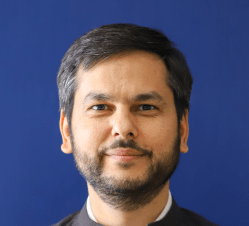Content from the Brookings Institution India Center is now archived. After seven years of an impactful partnership, as of September 11, 2020, Brookings India is now the Centre for Social and Economic Progress, an independent public policy institution based in India.
This article originally appeared in The Asan Forum. The views are of the author(s).
How many acronyms can one invent to signal a country’s foreign policy interests? Many, if you are Narendra Modi. The Indian prime minister recently spoke about an India-France “In-Fra” alliance. Last year he reportedly coined or popularized the JAI (Japan, America, India) and RIC (Russia, India, China) trilaterals. There’s also his SAGAR concept (Security and Growth for All in the Region). Modi’s schedule at the nineteenth G20 summit in Osaka reflected not only his personal passion for acronyms but also his country’s policy to diversify options and craft a fine balance between the United States, China, and several other regional powers. As noted by one of India’s leading strategic affairs editors, Suhasini Haider, “rarely have meetings on the sidelines around one summit carried as much import on India’s future policies as the G-20 summit in Osaka.”1
During his 48 hours in Japan, the Indian prime minister held nine bilateral meetings with the leaders of the United States, Japan, Saudi Arabia, South Korea, Germany, Indonesia, Brazil, Turkey, and Australia and also six pull-aside meetings with his counterparts from Thailand, Vietnam, France, Italy, Singapore, and Chile. Most importantly, he engaged two rather contrasting geostrategic trilaterals with equal excitement. The JAI meeting with President Trump and Prime Minister Abe discussed the “Indo-Pacific region and how the three countries can work together in terms of connectivity, infrastructure, and ensuring that peace and security is maintained.”2 In contrast, in an allusion to the American hegemon, at the RIC meeting with presidents Putin and Xi, Modi professed to “promote a multi-polar world, a world in which there are many centers of influence and stability.”3
Modi’s “delicate” balancing act is not a radical departure but more of a reworking of India’s classic non-aligned posture. Most recently defined in the words of a retired Indian diplomat who served as foreign secretary, Shyam Saran, “the stronger and more diversified relations India has with all the major powers, [the more it] helps us deal with our challenges. […] Whether it is the US, China or Russia, each one will try to push India in a direction it likes and it is for us to make our decision on how to balance these contrary pressures.”4
The Modi version of India’s balancing act is focused on pursuing a middle way: limiting Indian exposure to the increasingly conflictual Sino-American dynamics by keeping decent relations with both Washington and Beijing, giving minimally necessary love to Russia, and also deepen partnerships with other middle powers such as Japan, Australia or France and the European Union. In parallel to pursuing this geostrategic equilibrium, India will also have to work hard at home, since Modi’s maneuvering ground for external acrobatics hinges on his domestic ability to increase his country’s limited economic and military capabilities.
In this article, rather than a mere explanation of Modi’s middle way, I also identify the blind spots ahead: India’s non-aligned and dual strategy is not without dangers because it often boils down to a lazy attempt to just muddle through. Can India, as so many times in the past, afford to ignore strategic forks in the road and instead of pursuing bold alignments, continue to thread its middle path through an increasingly dark jungle?
Read the full article here



Commentary
Op-edIs Modi’s balancing act a reworking of India’s classic non-aligned posture?
August 30, 2019